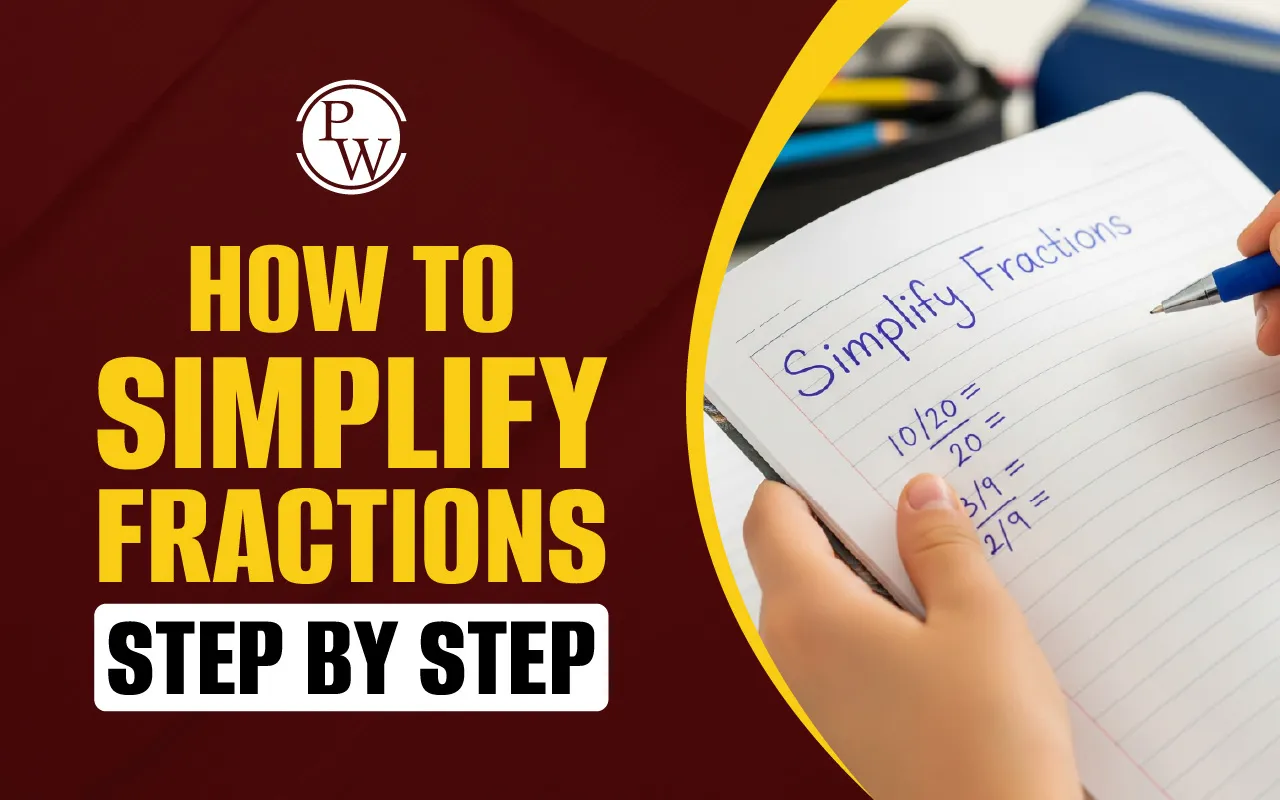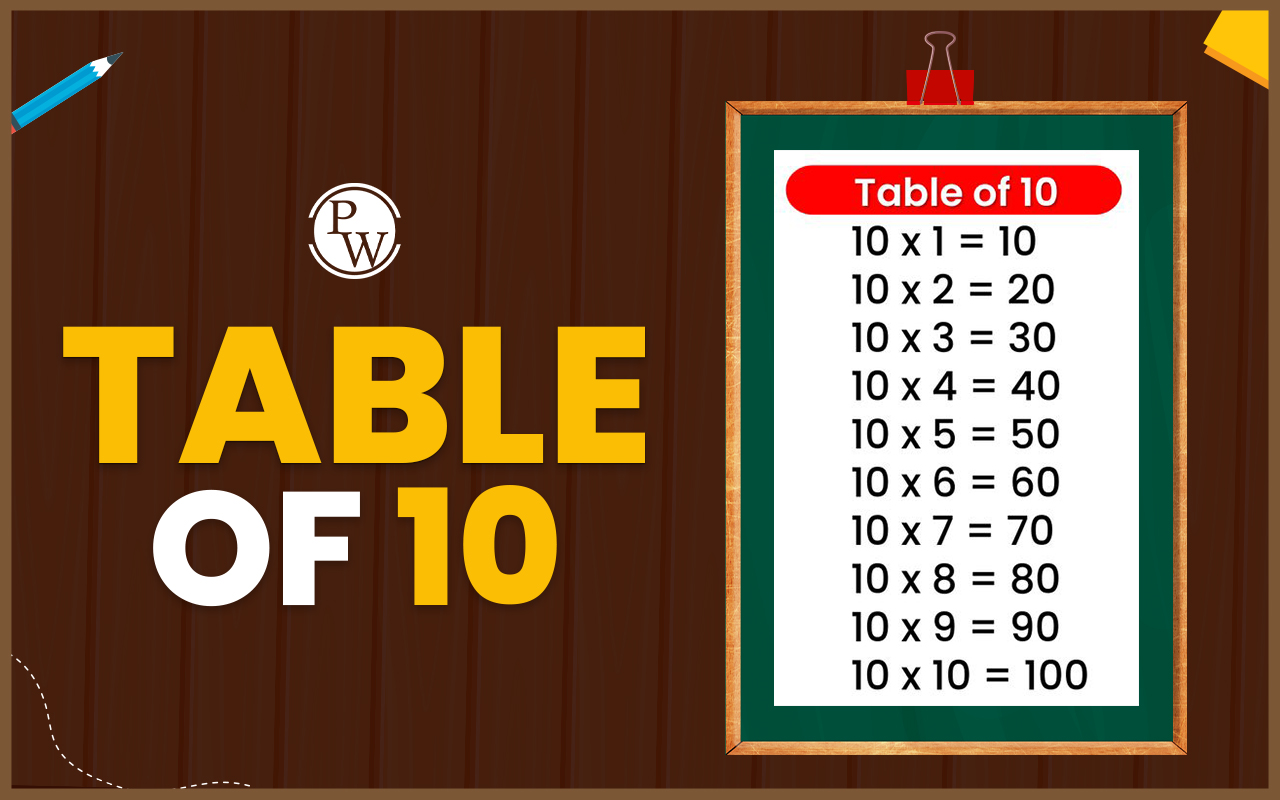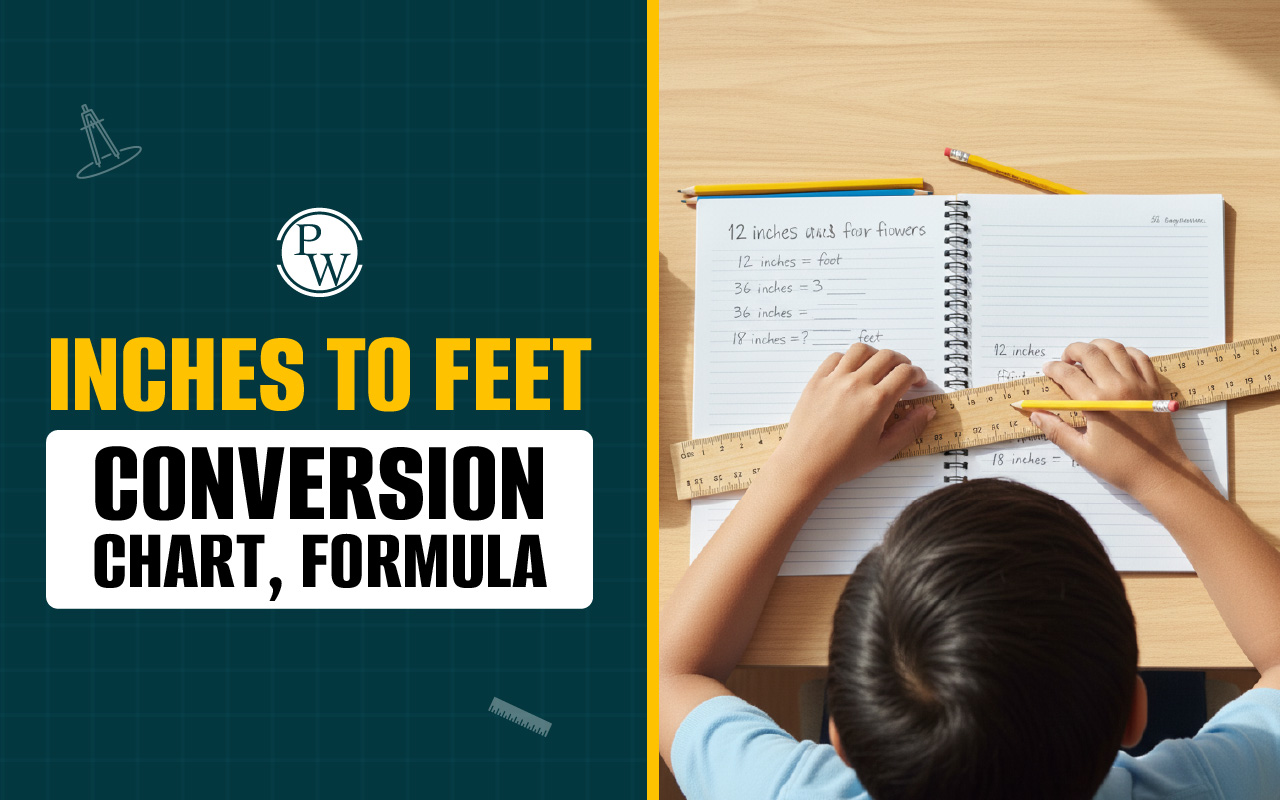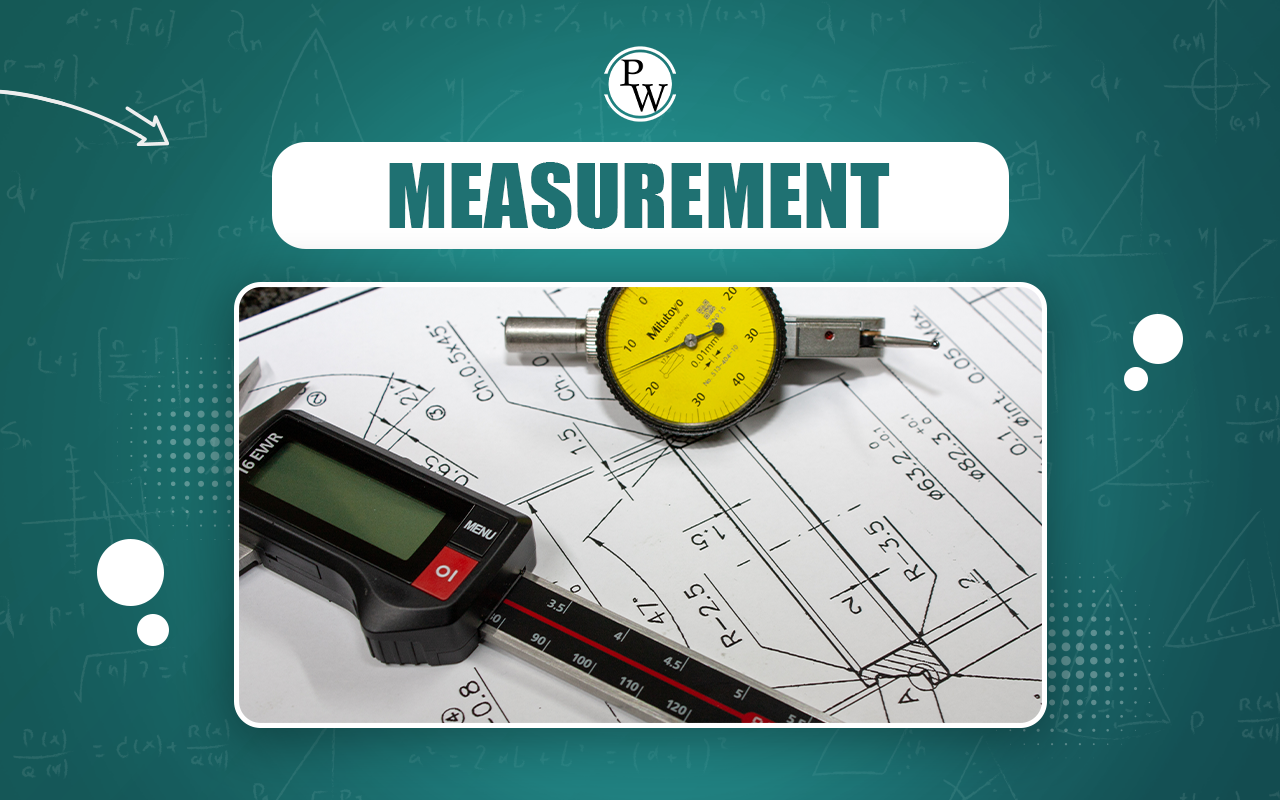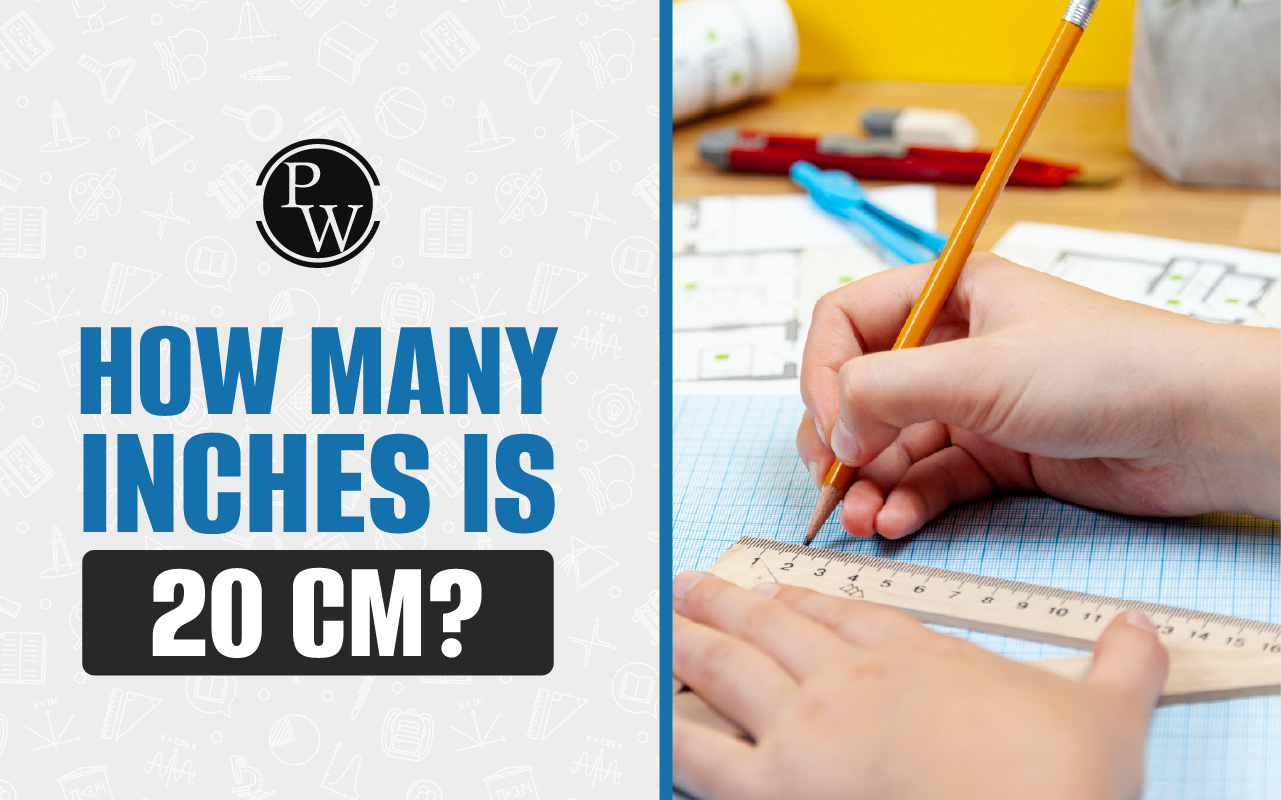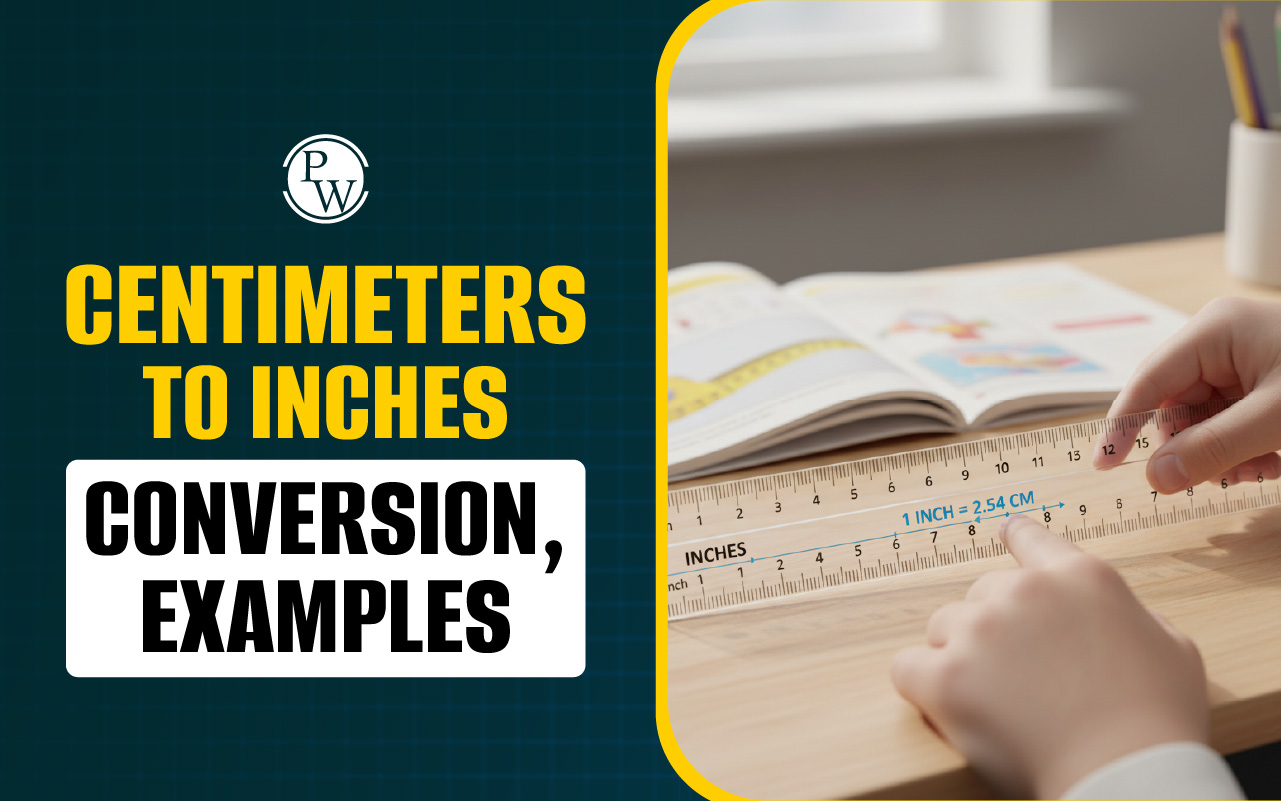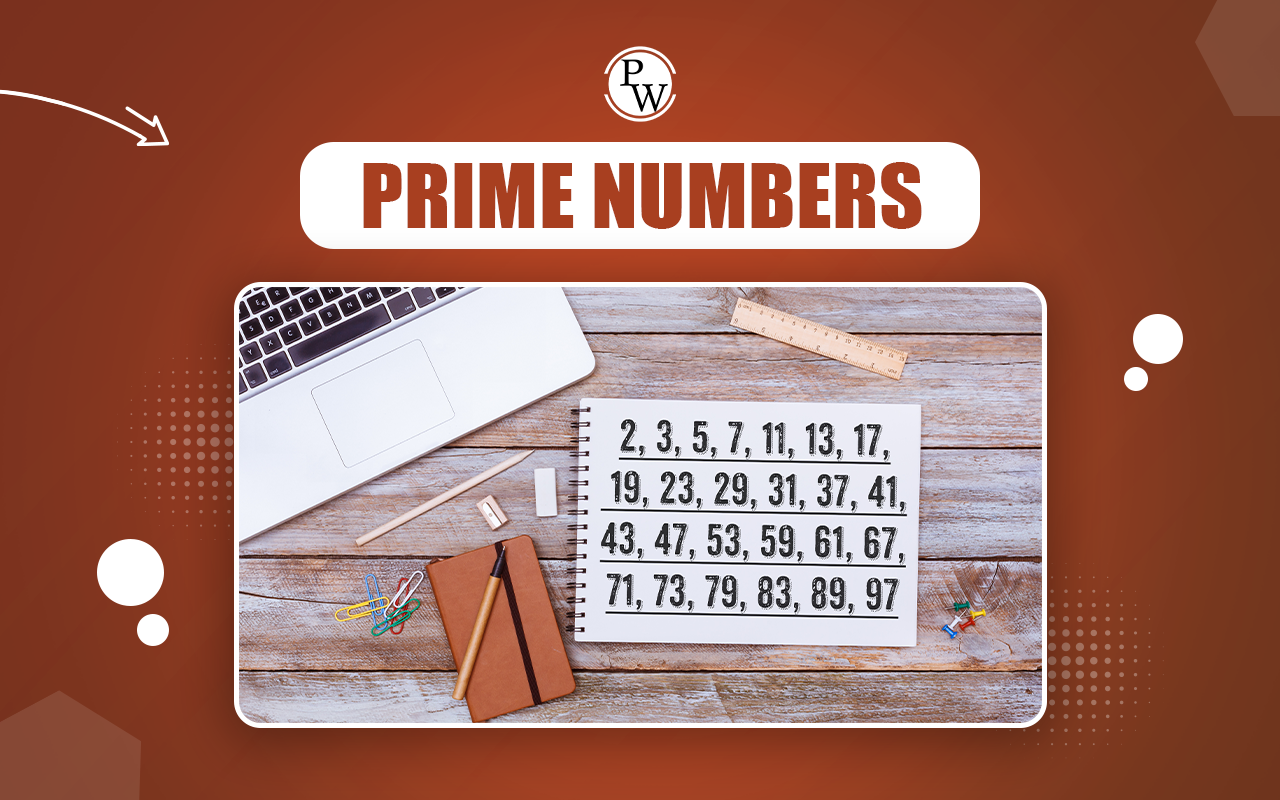
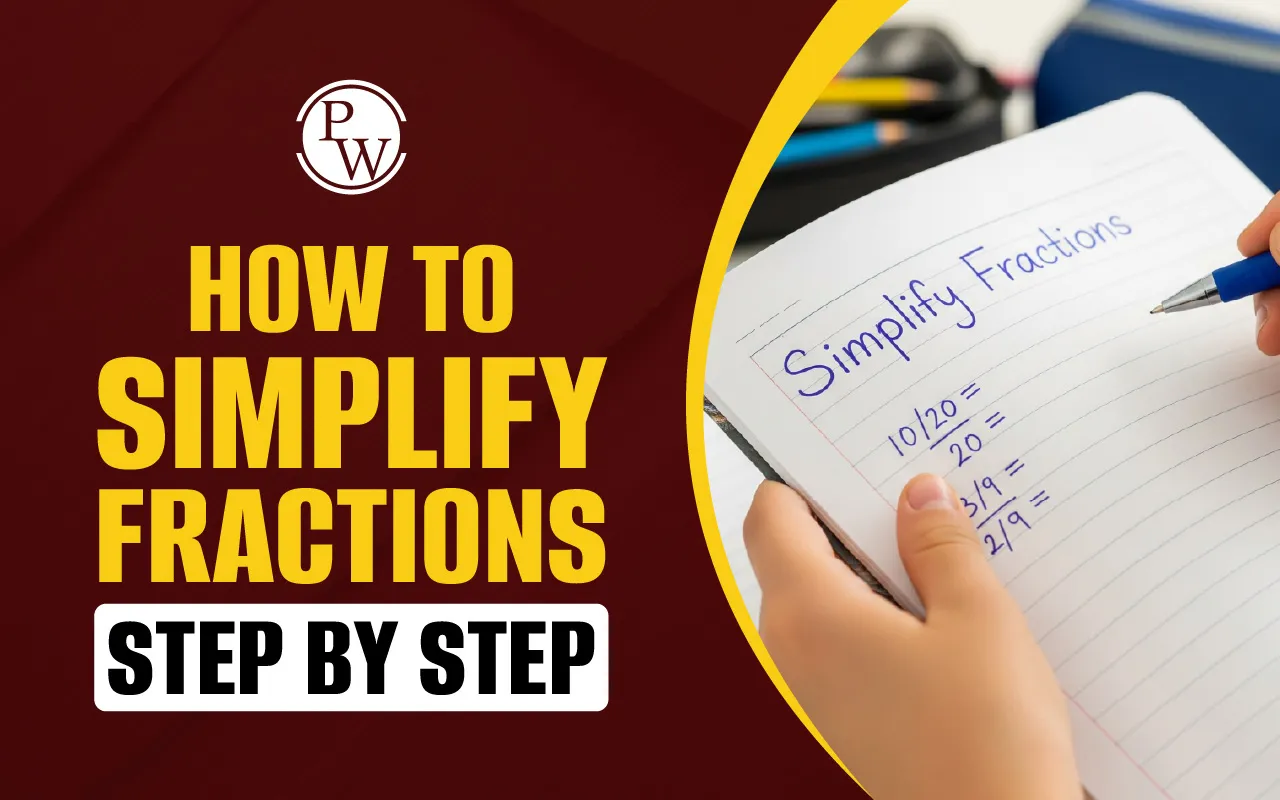
Simplification of fractions makes math calculations much easier and faster. It not only makes large fractions look simpler, but also helps solve problems quickly and accurately.
Your child needs to understand the logic behind simplifying fractions, which builds confidence to handle any fraction involving whole numbers, variables, or mixed fractions. We will discuss here how to simplify fractions in a step-by-step manner to clarify the process and minimise any chances of errors.
Read More: What Are Mixed Numbers?
What Does Simplifying a Fraction Mean?
Simplifying a fraction means rewriting a fraction in its smallest form to keep its value the same. In the simplest form, the numerator and denominator of the fraction don’t have any common factor except 1.
For example, the fraction 16/24 can be rewritten as 2/3 in the simplest form to keep the value the same. Again, in the fraction 2/3, the numerator and denominator have no common factor except 1.
Why Simplify Fractions?
Simplification of fractions is an essential part of calculation, which gives the following advantages:
-
It is easier to make calculations with smaller numbers
-
Fractions in simplified forms are easier to understand
-
Smaller numbers reduce the chance of calculation errors
-
Fractions in simplest form help in comparison and standardisation
How To Simplify Fractions Step-by-Step?
Simplification of a fraction means reducing the fraction to its lowest form. It can be carried out by different methods as explained below.
Equivalent Fraction Method
This process involves simplifying the fraction to its equivalent form by changing the numerator and denominator, but keeping the same value. The steps are as follows:
-
Find a common factor between the numerator and the denominator.
-
Divide the numerator and denominator by this common factor.
-
Repeat the same step as mentioned above until there is no common factor remaining between the numerator and the denominator (except 1)
For example,
18/48 = 9/24 (divided by common factor 2) = 3/8 (divided by common factor 3)
So, the simplest form 18/24 is 3/8 because there is no common factor between 3 and 8.
Read More: Multiplication of Fractions
Prime Factorisation Method
This method determines the prime factors of the numerator and denominator. The simplifying process involves the following steps:
-
Express the numerator and denominator as the product of their prime factors.
-
Cancel out the common factors of the numerator and the denominator.
-
The remaining numbers in the numerators and denominators are multiplied to get the fraction in its smallest form.
For example,
36/56 = (2 x 2 x 3 x 3) / (2 x 2 x 2 x 7) = (3 x 3)/ (2 x 7) = 9/14
Greatest Common Factor Method
This method simplifies fractions using the GCF (Greatest Common Factor) of the numerator and the denominator. Here is a step-wise process to perform the simplification.
-
Factorise both the numerator and the denominator
-
Identify the GCF between the numerator and the denominator
-
Divide the numerator and denominator by the GCF
-
The fraction obtained is the simplest form of the given fraction
For example,
The given fraction is 24/40
The factors of 24 are: 1, 2, 3, 4, 6, 8, 12, 24
The factors of 40 are: 1, 2, 4, 5, 8, 10, 20, 40
So, the GCF of 24 and 40 is 8.
By dividing both 24 and 40 by 8, we get: 24/40 = 3/5
Therefore, the simplest form of 24/40 is 3/5.
Read More: Division of Fractions
Simplifying Fractions with Variables
In algebra, we often encounter fractions involving variables. The expressions may contain variables of different degrees along with constants as coefficients. In this case, simplification involves finding the common factors, including numbers and variables.
Let’s explain the process of simplifying fractions with variables through an example:
Simplify the fraction: 15a3b2 / 18a2b
-
Step 1: Expand the numerator and denominator as a product of numbers and variables.
15a3b2 = 3 x 5 x a x a x a x a x b x b
18a2b = 3 x 6 x a x a x b
-
Step 2: Cancel the common factors (variables and constants) between numerator and denominator.
15a3b2 / 18a2b = (3 x 5 x a x a x a x a x b x b) / (3 x 6 x a x a x b) = 5ab/6
Therefore, simplified form of 15a3b2 / 18a2b = 5ab/6
Simplifying Mixed Fractions
A mixed fraction has a whole number part and a proper fraction part. Simplifying mixed fractions involves the following methods:
Simplifying the Fractional Part
Step 1: Simplify the fractional part using any methods discussed earlier.
Step 2: Write the simplified fractional and the whole number parts.
For example, the mixed fraction 56/8 can be written as 53/4 in the simplified form.
Converting to Improper Fraction
Step 1: Convert the mixed fraction to an improper fraction
Step 2: Carry out the simplification using the same method of simplifying fractions discussed earlier.
Step 3: Convert the simplified fraction to a mixed fraction, if possible.
For example,
Convert 5 6/8 to the improper fraction 46/8 and simplify it to 23/4. Now convert 23/4 into a mixed fraction 5 3/4
Simplify Fraction Calculator
A simplified fraction calculator is a digital tool that instantly calculates the GCF and reduces fractions to their lowest terms. If your child is working with large numbers or handling multiple fractions in a single problem, a simplified fraction calculator becomes handy for getting quick answers.
You enter the fraction, and it gives you the lowest terms. However, encourage your child to learn and apply the manual method because dependency on such tools hampers the development of analytical and thinking skills. Moreover, such calculators are not allowed in exams.
Also read: Improper Fractions
Common Mistakes to Avoid When Simplifying Fractions
It’s common to make mistakes when dealing with large fractions. Keep your child aware of the following mistakes that might happen during the simplification of fractions.
Forgetting to simplify fully
Sometimes, students reduce the fraction, but are left with a fraction that can be simplified further. They must check whether any common factor exists between the numerator and the denominator and continue simplifying until the lowest form.
Cancelling terms incorrectly
While cancelling the common factors, especially with variables, don’t miss any common number or variable between the numerator and the denominator. In the simplest form, the fraction should not have any common factor or variable between the numerator and the denominator.
Ignoring the negative sign
For fractions with a negative sign, always place the sign before the fraction, not the numerator or denominator. It helps maintain clarity and avoid mistakes while factorising the numerator and denominator. Simplify using the standard process and put the negative sign in the final result.
Simplifying Fractions Examples
1. Simplify the fraction 54/72 using prime factorization
Solution: 54/72 = (2 x 3 x 3 x 3) / (2 x 2 x 2 x 3 x 3) = ¾
2. Simplify the fraction 16/36 using the GCF method.
Solution:
Factors of 16 are: 1, 2, 4, 8, 16
Factors of 36 are: 1, 2, 3, 4, 6, 9, 12, 18, 36
The GCF is 4.
So, by dividing both 16 and 36 by 4, we get:
16/36 = 4/9
Fractions are a fundamental part of mathematics, but dealing with large fractions becomes complicated, and solving problems can feel difficult. Simplifying the fractions makes them easier to work with, helping your child to make quick calculations with numbers or solve complex equations with variables.
Make Your Child Learning Journey Enjoyable With CuriousJr
Boost Your Child’s Confidence in Math with CuriousJr’s Online Tuition Classes
Does your child feel nervous or unsure when solving math problems at home? Many children struggle with math, which can lead to low marks and a loss of interest in the subject.
CuriousJr’s Online Tuition Classes for Classes 3 to 9 help children understand math step by step and enjoy the process of learning. Lessons are simple, engaging, and suited to your child’s learning needs.
Our two-teacher system gives personal support during live classes and after class as well. Whether it’s a doubt or extra practice, help is always available.
With fun activities, visuals, and easy examples, even tough topics become easier to grasp. Regular homework reinforces what is taught in school, and parents get regular updates on progress. Book a free demo class today and take the first step toward better math learning.
Simplify Fractions FAQs
Can we simplify a fraction with a prime number as a numerator or denominator?
When does a simplest fraction become a whole number?
How to simplify an improper fraction?
Can we simplify a fraction with 1 as a numerator?

